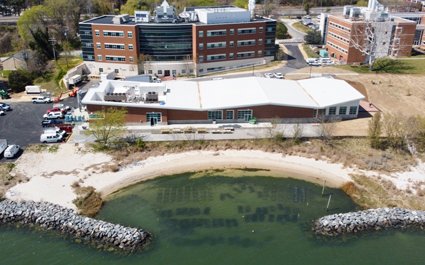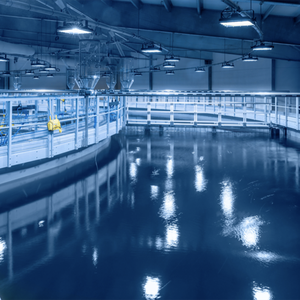The U.S. Virginia Institute of Marine Science (VIMS) built the Acuff Center for Aquaculture to advance the science of farming shellfish. The 22,000-square-foot facility, which will open soon, houses a shellfish research hatchery designed to accommodate the operation of VIMS’ Aquaculture Genetics and Breeding Technology Center (ABC), plus several other research, education, and advisory teams collaborating within the institute’s recently established Shellfish Aquaculture Program.
Jessica Moss Small, ABC associate director, said that “at its most fundamental level, the facility will greatly enhance ABC’s core mission. We’ll use it to create genetically distinct groups of oysters for our ongoing breeding work, as well as other grant-funded projects. For ABC, the hatchery will produce hundreds of unique groups of oysters every year, many of which will eventually go to the industry as broodstock.” VIMS’ production of spawnless broodstock, pioneered by now-emeritus professor Stan Allen, was the catalyst for Virginia’s rapidly growing oyster aquaculture industry.
Small cites several features of the new facility as especially beneficial, particularly in comparison to the hatchery it will replace. Constructed in 1975, that building is now both undersized and outmoded.
Small said that “the Acuff Center will provide highly filtered seawater water via computer-operated pumping and filtration systems at optimal temperatures to grow algae and oyster larvae, and lots of floor space and larval tanks so that production isn’t limited or stalled due to space constraints. It will also enable us to do all our spawning work in a single facility, creating valuable efficiencies in personnel and resources.”
Bill Walton, Acuff Professor of Marine Science and coordinator of the Shellfish Aquaculture Program at VIMS is also excited to see the facility open. “The Acuff Center will allow VIMS to better serve stakeholders in several ways,” he said. “First, it will allow us to conduct experiments in systems comparable to what growers currently use, and thus position us to conduct more research at a ‘real-world’ scale. Second, it will be an ‘open-source’ hatchery available to stakeholders to see and assess new systems. Third, it will be a premier training ground for those interested in shellfish aquaculture.”
Both Small and Walton express particular enthusiasm for the collaborative opportunities the new facility will offer. “With the Acuff Center,” said Small, “we’ll be able to work side-by-side as needed with collaborators in a shared space, rather than having to shoe-horn people as in our current facilities. Also, building staff can supply things like filtered water, algae, larvae, or spawning tanks to others at VIMS, so that our expertise in ABC will be available as needed for guidance.”













